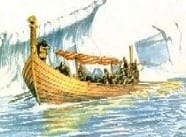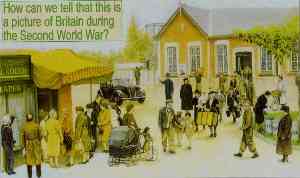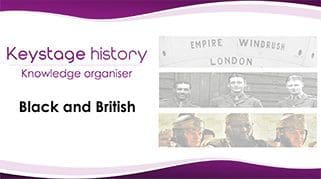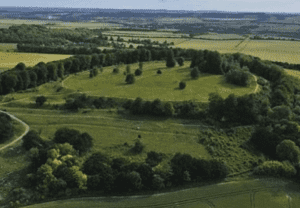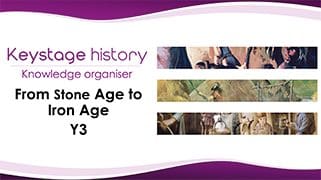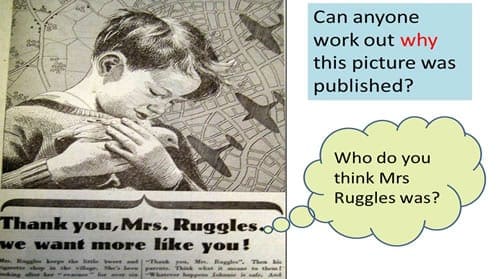
The BBC children’s history section has been in touch with the school asking for their help in extending their website section on Eric the evacuee. There is nothing wrong with it: indeed, it is very popular. That’s why they want to make it longer. There has been one complaint, however, but the pupils have to work that out for themselves and then remedy it.
The pupils’ job is to create a better balanced script with accompanying images which:
a) show how mixed the evacuees’ experience was,
b) explain why there were such differences.
This should stimulate the most able in particular to discuss the nature of evidence, such as why government photos give such a positive view and reasons why certain images were produced.
Learning objectives
- Pupils can analyse a wide variety of short testimonies from evacuees and can describe their contrasting experiences
- They can offer a couple of reasons why experiences differed
- They can explain why the negative testimonies were at odds with the positive public face of evacuation and suggest reasons why certain positive images were produced.
- The gifted and talented deepen their understanding by focusing on the purpose behind two images about evacuation which have to be treated with caution.
Step 1
Set the challenge. The BBC has contacted the school to ask if the pupils in Y5/6 can help them improve their website coverage of evacuation in World War Two and the Eric the evacuee animation in particular. Show slide 2 of the PowerPoint presentation to make the task real.
The short animation from the BBC website or Vimeo or You Tube . Ask the children what impression it gives of evacuation – thumbs up for positive, down for negative, sideways if pros and cons. Most will suggest that it is very positive. Eric seems happy and life looks fun. Slide 3 asks whether all evacuees were as happy as Eric.
Step 2
Show the three pieces of evidence shown on PowerPoint slide 4. How do these views compare with the animation? Clearly there is some contradiction. Can the pupils work out which view is closer to the truth and then create a webpage which describes and explains these differences?
Step 3
To start the enquiry proper, pupils are given role cards as explained on slide 5. They are each given testimonies on the numbered role cards (Resource file 1). They have to read these through so that they are confident with the contents of their own card. Now the action starts. The pupils have to imagine that they are in a reunion of these evacuees looking back on their experience over 65 years later. Their job is to find out if everyone felt the same about evacuation as they did. To gain this overview they have to speak to everyone in the room to find out their views. Encourage pupils NOT to read from their card – that’s why they were given it early – and to speak, in role, as if it really was them remembering what had happened all that time ago. They record these briefly, using Resource sheet 2, preferably with a clip board. This recording grid asks pupils to make a judgement about whether the view is positive or negative on a 7 point scale. There is also a space to add any interesting detail that they feel might be worth using in their webpage. Discuss a couple at random if you like. Slide 6 could be used to model the task. Remind pupils to use the space on the right to indicate any memories that they think might be worthy of inclusion on their website, perhaps as spoken audio files. You might want to discuss what might be a good thing to include, though this will be looked at in more detail later.
Step 4
Pupils will work at a different pace as they collect the information, meaning that some will not finish. This is not so crucial, provided that you make sure that they all have an opportunity to ‘catch up’ from others, perhaps by comparing grids and adding others’ judgement to any they hadn’t been able to record. Try to keep this crisp. A long feedback on each source isn’t required at this stage. Now ask the children to stay in role and to stand in a line or continuum across the front of the room with the cards(Resource Sheet 3). ‘Horrible experience’ at one end and ‘Very happy’ at the other. Pupils should stand on this imaginary line in the place that most accurately describes their role card character’s experience. Those with mixed experience should stand in the middle. They may need a little time to adjust their position, perhaps by comparing notes with those either side of them and making small adjustments. What should emerge then is that there was a wide range of experience. The next phase explores why this was so.
Step 5
Now move the challenge up a level by asking pupils to think why some people had amuch better time than others. Allow them to talk to the pupils on either side of them to see if they can come up with two reasons. This is deliberately challenging. Some will say that some host families were kinder than others, but some should also realize that much depended on children’s prior experience and home background. It might even depend on class and age. Try to draw these ideas out asking for examples wherever possible
Step 6
At this stage, pose the hinge question: ‘if so many evacuees were so sad, why do we have so many photographs in newspapers of them looking so happy?’ Have slide 7 showing as you ask the question, to focus attention while the pupils think. Ask them to work in groups of 3 to consider the possible answer. Then display slide 8. This offers 4 plausible answers. Pupils have to discuss and work out which arguments are the strongest. Encourage mature discussion so don’t ask for a snap answer or put them under pressure. This ‘wait time’ is crucial for ensuring thoughtful responses. When they have made their decisions ask a few groups with different priority orders to explain and justify their choice. Some may raise the point that not all photos are positive, as shown in slide 4. But photos like this were for private not public consumption. Stress the need for the government to keep up morale in wartime, especially when so many mums were bringing their children back home. This was particularly the case in the early months of the war during the Phoney War, but also the period after the major Blitz attacks and before the V1 and V2 rockets fell.
Step 7
Following pupils’ feedback on their choice of explanations, it is now time to return to the original task. Discuss with the whole class what our ‘improved’ website should contain.
We are restricted to 100 words 3 photographs and 3 drawings of our own. What should we include?
What makes a good account? The following ideas might be teased out:
- Try to show the variety of experience, using words, photo and your own drawings
- Try to show a rough balance between negative and positive. It doesn’t have to be absolutely equal.
- Try to explain why not all had the same experience.
- Try to explain why the photos seem to be positive.
Step 8
Having discussed the criteria it is now time to free the pupils’ creative imagination. They can display their design portfolio in any way they like. You might like to model a couple of imaginative possibilities but be careful not to take the very ideas that pupils might be proud of thinking up for themselves. They might:
- storyboard a number of frames
- digitally import images, and perhaps audio files of pupils reading testimonies, plus scanned images of pupils’ artwork etc onto PowerPoint.
Extra challenge for the most able
Those pupils who are working at a high level of sophistication should be challenged by looking at slides 9 and 10. These show two images of smiling evacuees. But what was the PURPOSE of each image? Slide 9 was an appeal to other foster mothers to come forward to show what a difference their kindness could make. Clearly they don’t want to show a miserable child. They should spot that slide 10 is an advert for HP brown sauce showing how that helped make evacuees happy!!
Having had this experience the most able should be encouraged to include in their work some reference to the fact that there were reasons why we have so many smiling evacuees – because that was an image constantly being presented to people in wartime to keep up morale, encourage participation and sell sauce!

